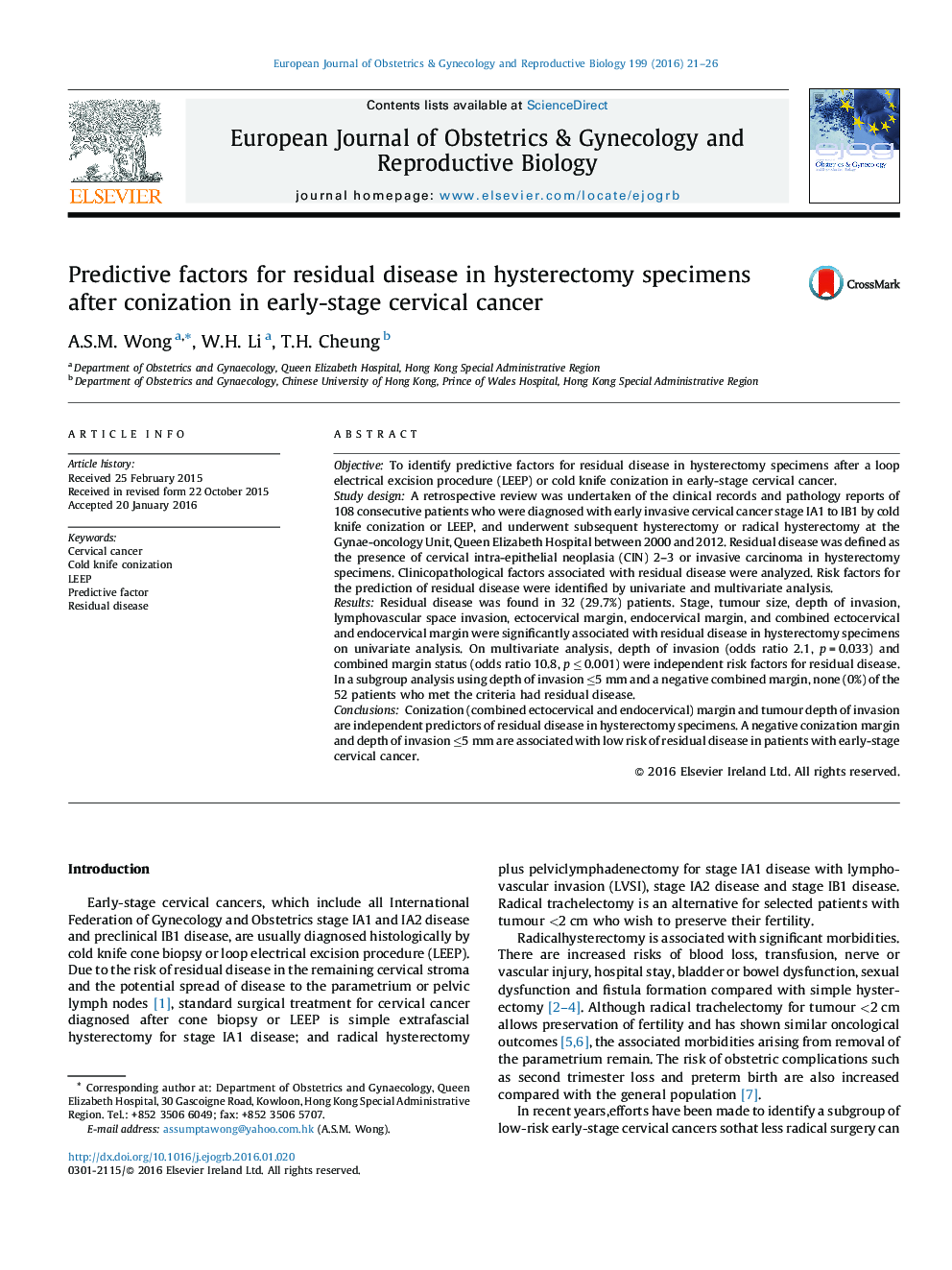| کد مقاله | کد نشریه | سال انتشار | مقاله انگلیسی | نسخه تمام متن |
|---|---|---|---|---|
| 3919485 | 1599782 | 2016 | 6 صفحه PDF | دانلود رایگان |
ObjectiveTo identify predictive factors for residual disease in hysterectomy specimens after a loop electrical excision procedure (LEEP) or cold knife conization in early-stage cervical cancer.Study designA retrospective review was undertaken of the clinical records and pathology reports of 108 consecutive patients who were diagnosed with early invasive cervical cancer stage IA1 to IB1 by cold knife conization or LEEP, and underwent subsequent hysterectomy or radical hysterectomy at the Gynae-oncology Unit, Queen Elizabeth Hospital between 2000 and 2012. Residual disease was defined as the presence of cervical intra-epithelial neoplasia (CIN) 2–3 or invasive carcinoma in hysterectomy specimens. Clinicopathological factors associated with residual disease were analyzed. Risk factors for the prediction of residual disease were identified by univariate and multivariate analysis.ResultsResidual disease was found in 32 (29.7%) patients. Stage, tumour size, depth of invasion, lymphovascular space invasion, ectocervical margin, endocervical margin, and combined ectocervical and endocervical margin were significantly associated with residual disease in hysterectomy specimens on univariate analysis. On multivariate analysis, depth of invasion (odds ratio 2.1, p = 0.033) and combined margin status (odds ratio 10.8, p ≤ 0.001) were independent risk factors for residual disease. In a subgroup analysis using depth of invasion ≤5 mm and a negative combined margin, none (0%) of the 52 patients who met the criteria had residual disease.ConclusionsConization (combined ectocervical and endocervical) margin and tumour depth of invasion are independent predictors of residual disease in hysterectomy specimens. A negative conization margin and depth of invasion ≤5 mm are associated with low risk of residual disease in patients with early-stage cervical cancer.
Journal: European Journal of Obstetrics & Gynecology and Reproductive Biology - Volume 199, April 2016, Pages 21–26
